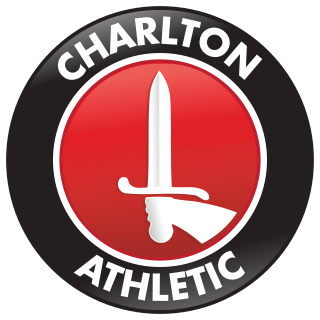
Charlton Athletic Football Club is a professional association football club based in Charlton, south-east London, England. The team compete in EFL League One, the third level of the English football league system.
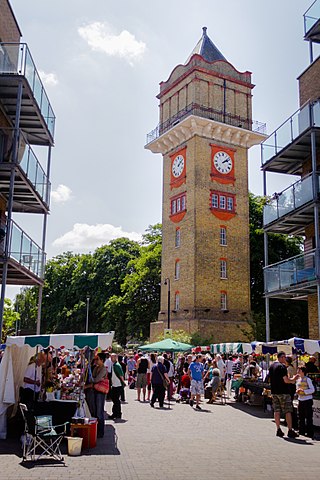
Hither Green is a district in south-east London, England, in the London Borough of Lewisham. It forms the southern part of Lewisham, 6.6 miles (10.6 km) south-east of Charing Cross, and on the Prime Meridian.

Southend United Football Club is a professional association football club based in Southend-on-Sea, Essex, England, which competes in the National League, the fifth level of English football. The team are known as "The Shrimpers", a reference to the area's maritime industry that is included as one of the quarters on the club badge.

Dover Athletic Football Club is a semi-professional association football club based in the town of Dover, Kent, England. The club currently competes in the National League South, the sixth tier of English football. The club was formed in 1983 after the dissolution of the town's previous club, Dover F.C., whose place in the Southern League was taken by the new club.

Clapton Football Club is a football club based in Plaistow, East London. The club are currently members of the Eastern Counties League Division One South and play at the Terence McMillan Stadium in Plaistow following their 2019 eviction from their long-term home, the Old Spotted Dog Ground in Forest Gate.
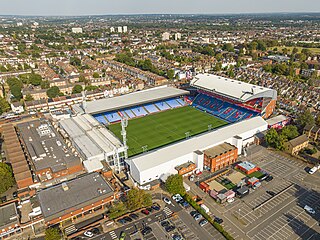
Selhurst Park is a football stadium in Selhurst, in the London Borough of Croydon, England, which is the home ground of Premier League side Crystal Palace. The stadium was designed by Archibald Leitch and opened in 1924. It has hosted international football, as well as games for the 1948 Summer Olympics; it was shared by Charlton Athletic from 1985 to 1991 and Wimbledon from 1991 to 2003.

The Valley is a 27,111 capacity sports stadium in Charlton, London, England and has been the home of Charlton Athletic Football Club since the 1920s, with a period of exile between 1985 and 1992. It is served by Charlton railway station, which is less than a five-minute walk away from the stadium. An alternative route is the Jubilee line; exiting at North Greenwich, and changing for route 161, 472 and 486 buses, which stop outside the stadium.

Adams Park is an association football stadium in High Wycombe, Buckinghamshire, England. Built in 1990, it is the home ground of the local Wycombe Wanderers in League One. It was also leased from 2002 to 2014 to the rugby union club London Wasps from Aviva Premiership, and from 2016 to 2020 to the Reading F.C. Women football club. From the 2003–04 season to the 2005–06 season, the stadium was officially called Causeway Stadium, named after its sponsor Causeway Technologies.

St Andrew's, known for sponsorship reasons as St. Andrew's @ Knighthead Park, is an association football stadium in the Bordesley district of Birmingham, England. It has been the home ground of Birmingham City Football Club for more than a century. From 2018 to 2021, it was known as St Andrew's Trillion Trophy Stadium.
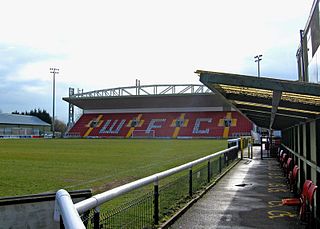
Kingfield Stadium, currently known as The Laithwaite Community Stadium for sponsorship reasons, is the home of Woking F.C. in the Kingfield area of Woking, Surrey which has a capacity of approximately 6,000, of which, 2,500 are seated on grandstands.
The London League was a football competition that was held in the London and surrounding areas of south-east England from 1896 until 1964.

The Manor Ground located in Plumstead, south east London was a football stadium. This arena was the home of football club Royal Arsenal, which was later named Woolwich Arsenal, and as such came to be known as Arsenal F.C.
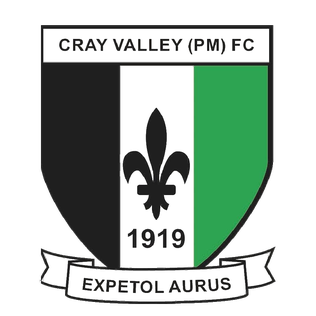
Cray Valley Paper Mills Football Club is a football club currently based in Eltham, in the Royal Borough of Greenwich, England. They are currently members of the Isthmian League South East Division and play at the Badgers Sports Ground.
Cressing Road, also known as the Rare Breed Meat Co. Stadium for sponsorship purposes, is a football stadium in Braintree, Essex, and the home ground of Braintree Town, and formally their reserve side. It currently has a capacity of 4,222.
The Football League 2009–10, was the seventeenth season under its current league division format. It began in August 2009 and ended on 8 May 2010.

Frank James "Bronco" Burton was an English professional footballer who played as full-back for West Ham United and Charlton Athletic in the Football League, and also for Queens Park Rangers and Grays Thurrock United. He was later head coach of Spanish club Real Oviedo.

Huish Athletic Ground, more commonly referred to as Huish, was a football stadium located in Yeovil, Somerset, England. It was the second home ground of Yeovil Town Football Club, after the Pen Mill Athletic Ground which they left in 1920, until the club's departure for Huish Park in 1990.

The South London derby is the name given to a football derby contested by any two of Bromley, Charlton Athletic, Crystal Palace, Millwall, and AFC Wimbledon, the five professional Football Association clubs that play in the Football League in South London, England. A sixth club, Sutton United, is also located in South London but currently do not compete in the Football League. It is sometimes more specifically called the South East London derby when played between Charlton and Millwall. The close geographical proximity of all the teams contributes significantly to the rivalries.
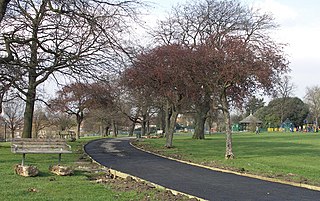
Mountsfield Park is a public park in Catford, near to Hither Green within the London Borough of Lewisham. It opened in 1905 and has since been greatly enlarged, incorporating a former football ground, The Mount, and adjacent allotments and playing fields. The nearest railway stations are Hither Green, Catford and Catford Bridge.

Catford Southend Football Club was an English football club from Lewisham, London, that mainly played in the London League during the early years of the 20th century. A proposed merger with Charlton Athletic foundered in 1924, before the Catford club folded in 1927.




















